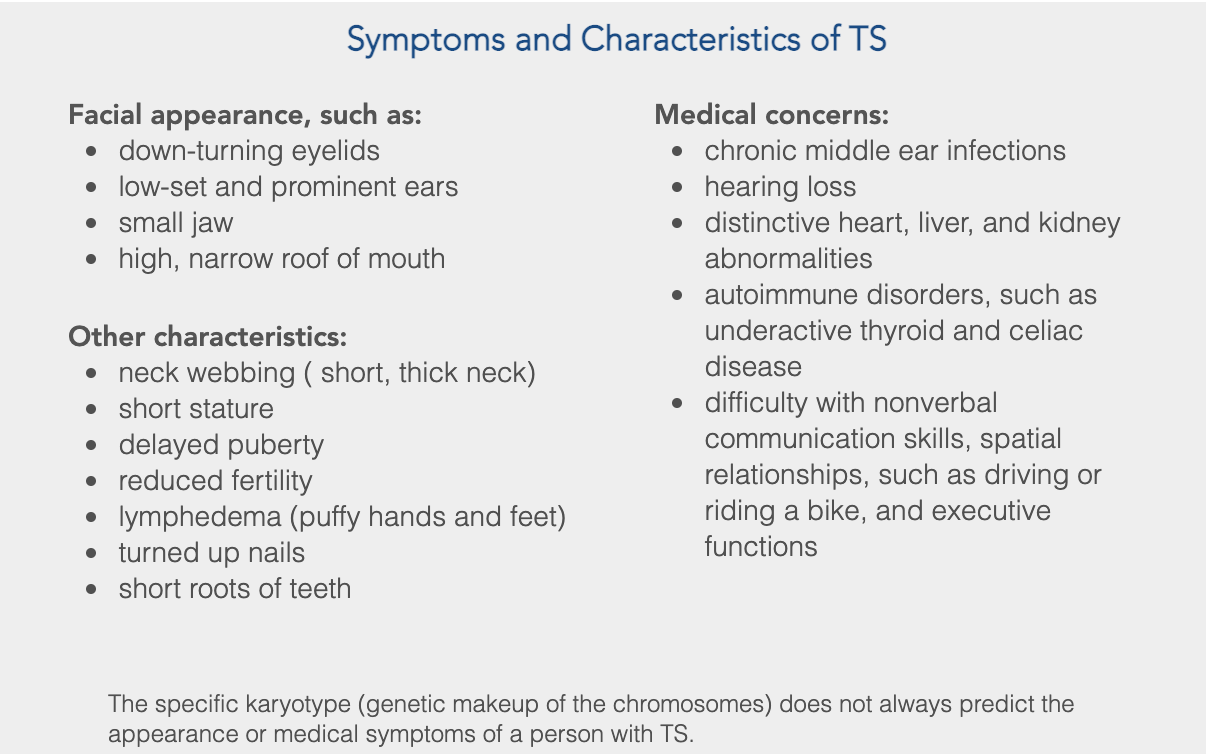This new world can seem daunting and overwhelming and quite frankly, scary! I see you, I hear you, and I’ve got just the thing to help you navigate your new reality. Download my FREE guide: 5 Things to do After Your Child’s Diagnosis, full of easy to follow action steps to help you guide you on your journey. Click here to download instantly!
So you just found out your daughter has Turner Syndrome. Or maybe you’re still pregnant and received this diagnosis before you’ve even met your daughter. Or maybe your daughter is five years old and you’d never heard of Turner Syndrome until now. Either way, you’re in the right place!
This post may contain affiliate links. For more information, you can read my disclosure statement here.
What Is Turner Syndrome
Turner Syndrome, also known as gonadal dysgenesis, is a rare chromosomal condition that only affects females. It was first described by Dr. Henry Turner in 1938. Although Turner Syndrome is rare, affecting only 1 out of every 2,500 births, it the most common sex chromosomal disorders in females. Turner Syndrome, or TS, is characterized by a partial or completely missing X chromosome, and this distinguishes TS into two main types:
Monosomy - complete loss of the second X chromosome
Mosaic - partial loss of the second X chromosome
As a reminder, most people have 46 chromosomes, 23 of which are inherited from the mother, and 23 are inherited from the father. In a male, the mother contributes an X chromosome and the father contributes a Y chromosome, creating an XY pair. In a female, the mother contributes an X chromosome and the father also contributes an X chromosome, resulting in an XX pair.
As I mentioned earlier, TS only occurs in females. This is because males only have one X chromosome and if that X chromosome is partially or completely missing, life is not viable. In contrast, females have two X chromosomes, which means that damage to one X chromosome still leaves another complete X chromosome, making life viable.
The exact cause of TS is thought to be random. In some cases, it arises due to an error during cell division of the sperm or egg, resulting in damage to all cells (monosomy). Other times, TS is the result of spontaneous errors that occur after fertilization, at the earliest parts of fetal development, resulting in damage to only certain cells (mosaic). It is believed that mosaic TS results in fewer developmental difficulties because fewer cells are affected, but it has been difficult to theorize due to a lack of research.
Regardless, Turner Syndrome is not a “fault” of the mother or the father and is not influenced by external factors (such as age, ethnicity or health).
Symptoms of Turner Syndrome
The most important thing to note about Turner Syndrome is that the signs and symptoms are highly variable and based on the amount of affected cells. Not all women with TS will have every symptom and each woman will have unique health needs. There are, however, some consistent symptoms seen in women with TS, including lack of ovarian development and delayed growth. Normal intelligence is seen in women with TS, although specific learning disabilities may be present. Below is a list of common symptoms and characteristics from The Turner Syndrome Society of the United States.
Treatment for Turner Syndrome
Treatment for TS varies as widely as its signs and symptoms. Based on a woman’s specific needs, treatment for TS should be addressed by a variety of specialists, including: pediatricians, cardiologists, geneticists, gynecologists, endocrinologists, psychologists, and more.
For example, if a girl with TS is experiencing delayed growth, a pediatrician may recommend Growth Hormone Therapy and a gynecologist may recommend estrogen replacement during puberty. Each unique concern is typically treated by a specialist as the need arises. Overall, with the help of committed medical specialists and a healthy support system, girls with TS can live a long, fulfilled life.
Here is my favorite video by the Turner Syndrome Society UK that explains what Turner Syndrome is, its cause, and prognosis:
Meet Some Kids with Turner Syndrome
Don’t forget to download my FREE guide: 5 Things to do After Your Child’s Diagnosis. I designed this to help you navigate the unknowns that come with a new diagnosis, as well as provide support and extra resources. Click here to download now!
For more information:
Turner Syndrome Society of the United States
National Organization for Rare Disorders
I’m so glad you’ve made your way to this little corner of the Internet and I hope you are feeling more informed, encouraged and most importantly, no longer asking, “What is Turner Syndrome?”






